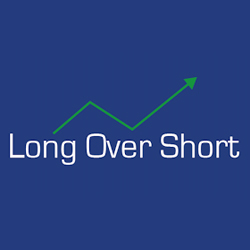Given the significant economic and business uncertainties roaming the world, alongside American equities being only slightly lower than in 1929 relative to earnings over ten years, I’ve decided to buy some more insurance against a large drop in markets around the world.
I’ll continue to buy deep value UK shares, but also have in place a financial instrument that rises in value between ten- and fifty-fold should the Dow Jones fall by a large percentage. Thus, even if the price of my UK shares declines, I’ll be OK overall.
Tomorrow’s newsletter will describe the instrument I bought. Today, I briefly recap the reasons to worry about a major downturn, especially in the American share market.
(More detail on these points is in the newsletters posted: 22nd Feb – 1st March 2017, 7th & 9th & 10th June 2017, 12th – 27th June 2017, 7th – 8th July 2017, 20th -21st Dec 2017, 18th – 22nd Sept 2018).
Cyclically adjusted price earnings ratio
The first chart is taken from Professor Robert Shiller’s website. It measures the current share price divided by the average of the past ten years’ earnings per share.
The ratio has come off its highs of around 34 in 2018 due to recent rapid growth in earnings helped by the tax cut, but nevertheless, it remains around the same level as in 1929 and 1999, and much higher than at the 1966 or 2007 peak.

Investors in American shares have high expectations of earnings growth over the next few years. Will they be fulfilled? Maybe. But there are some reasons to doubt continued resilience. I’ll outline a few of the possible triggers that might start a large slide in US shares:
- Bank crisis?
“Nearly every banking crisis in the last thirty years has been associated with a decline in cross-border investment flows that led to a decline in the price of a country’s currency. Every country that experienced a banking crisis had previously experienced an economic boom. These booms morphed into busts when the investment flows stopped.” (Manias, Panics and Crashes (2015) by Kindleberger and Aliber.)
Is the flow of loans to America slowing?
The Federal Reserve Bank of St Louis recently wrote: “As long as a government runs deficits, it has to find buyers for its bonds. In the years after the Great Recession, the Federal Reserve was a willing buyer of U.S. Treasury bonds. Since 2014, though, the Fed has put its buying spree on hold [Blue line in the chart]. So, somebody else must be taking up the slack. But who? The graph addresses this question. Contrary to some reports, foreigners are not soaking up federal government debt [Red line]. It seems to be domestic private investors [Green line], given that their holdings have continued increasing, while foreigners’ holdings have not.” We thus have an indicator that foreigners are less willing to fund American borrowing.

US GDP is around £21tn and total government debt (include the $13.5tn of Federal debt) is also $21tn, that is $64,000 per man woman and child – 40% of it is owed to foreigners.
Federal debt held by the Fed (Red), by US private investors (Green) and by Foreigners (Blue), percentage of total.

- Danger in corporate debt levels
The debt of US companies is double the level of 2008 ($3tn in 2008 and $6tn in 2019), when the last crisis set in – the economy has grown by about one-third in the last decade.
Nonfinancial corporate business; debt securities;
………………To read more subscribe to my premium newsletter Deep Value Shares – click here http://newsletters.advfn.com/deepvalueshares/subscribe-1

 Hot Features
Hot Features













